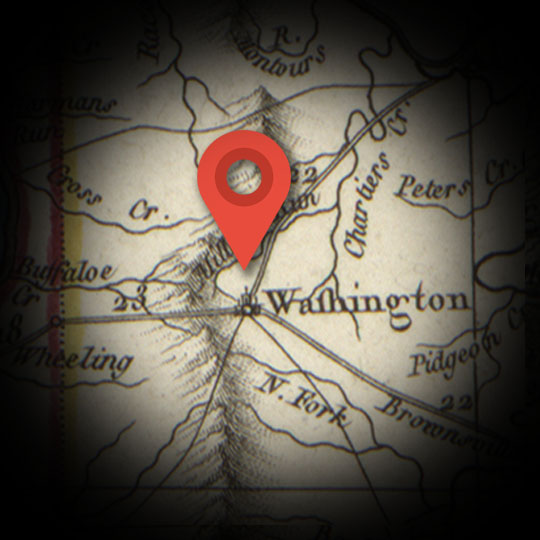WASHINGTON, PA
Explore
Washington, Pennsylvania, is the first of many places named after the man often credited as the father of the nation.
In return for his service in British uniform during the French and Indian War, George Washington had been given extensive royal land grants in this region. Ultimately, he was to find dealing with these real estate holdings more of a curse than a blessing. It proved to be extremely difficult to collect rent from his tenants in distant Western Pennsylvania,. The region’s white population was largely composed of Irish and Scotch-Irish immigrants who seemed intrinsically leery of landlords and government authority.
The protests to Alexander Hamilton’s federal excise tax on whiskey, and demand that settlers’ liquor-making stills be registered and inspected by government agents, centered around Washington, PA.
One of the insurgency’s most militant leaders, David Bradford, had settled in the town after emigrating from Maryland. Unlike many of the rebellion’s other participants, Bradford would never be offered amnesty. He fled down the Ohio River to escape from Hamilton and his men. Bradford’s house in central Washington still stands, and today serves as a museum.
Hamilton was in Washington on November 15, 1794, en route to Pittsburgh. By his lights, the arrival of federalized militia forces still had a lot of work to do. Hamilton was incensed to hear that a liberty pole had been erected in the northeast section of the county as a sign of continuing opposition to the excise tax policies. This incident stands as compelling evidence to how quickly-evolving the symbols of the American Revolution’s homogenous ideals can be; how they can be appropriated by individuals and groups with contesting, even contradictory, agendas.

TIME FRAME:
November 15, 1794
